Talking Syntax
Notice how I prefer the word syntax (“the way words are strung together to make sentences”) over grammar (“the study of classes of words and their roles in a sentence, and of what is conventionally preferred”)? I try to focus on understanding the way language ticks rather than on upholding a set of rules, or “correct grammar.” I don’t necessarily agree with those rules; I like to encourage linguistic mischief-making. Enjoy, also, the tips, the historical background, and some pointers on punctuation, which become easier to understand once you master the idea of syntax.
| |
The sentence as a miniature narrative
Introducing subject to predicate
I like to imagine a sentence as a boat. Each sentence, after all, has a distinct shape, and it comes with something that makes it move forward or stay still—whether a sail, a motor or a pair of oars. There are as many kinds of sentences as there are seaworthy vessels: canoes and sloops, barges and battleships, Mississippi riverboats and dinghies all-too-prone to leaks. And then there are the impostors, flotsam and jetsam—a log heading downstream, say, or a coconut bobbing in the waves without a particular destination.
My analogy seems simple, but it’s not always easy to craft a sentence that makes heads turn with its sleekness and grace. And yet the art of sentences is not really a mystery.
As writers we need to become sentence connoisseurs as well as a sentence artisans.
| |
Secrets for sinful prose
Divining the pearl
| |
Sorting out grammar, syntax, usage, & style
Decoding the elements of writing
| |
Elise Hahl on the birth of English grammar
Nerds, jocks, and the great English makeover
| |
The most common cardinal sins
Avoid these insidious errors
| |
Sentences crisp, sassy, stirring
Rendering ideas with syntactical style
Gabriel García Márquez writes unhurried sentences that almost defy parsing. William Faulkner lays down a nearly 1,300-word sentence that ended up in Guinness World Records, but he deploys the five words “My mother is a fish” as a complete chapter of a book. Joan Didion can stop us short with simple truths, and she can take us on strolls down labyrinthine corridors.
Trust these great writers: There is no one way to render an idea. Let’s explore how masters of the sentence play with length and style to make their sentences distinctive. But first, let’s review what we have learned along the way about how sentences can be organized.
| |
A punctuation primer
Dividing ideas with intention
| |
Nina Schuyler on the heroic search for le mot juste
Deconstructing stylish sentences





